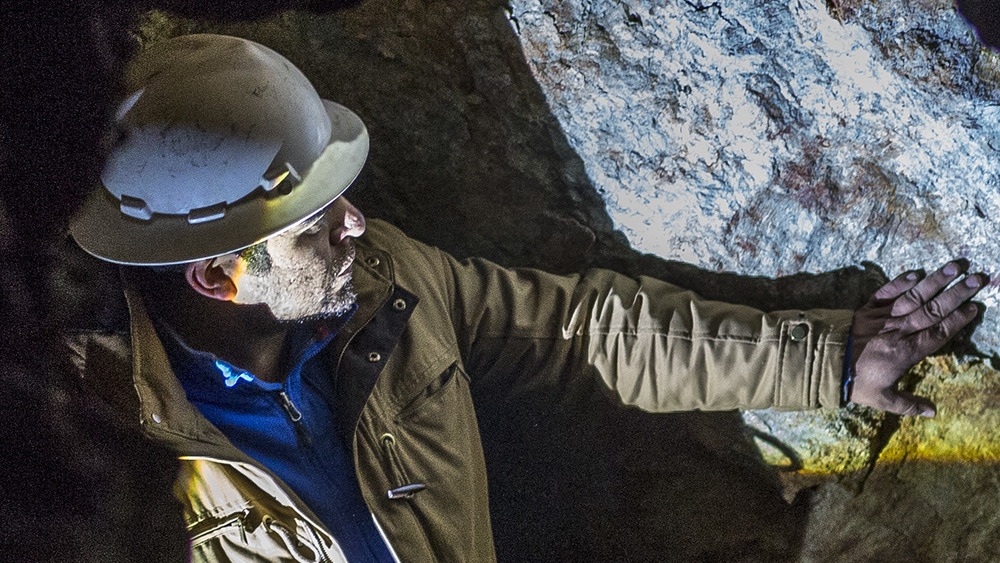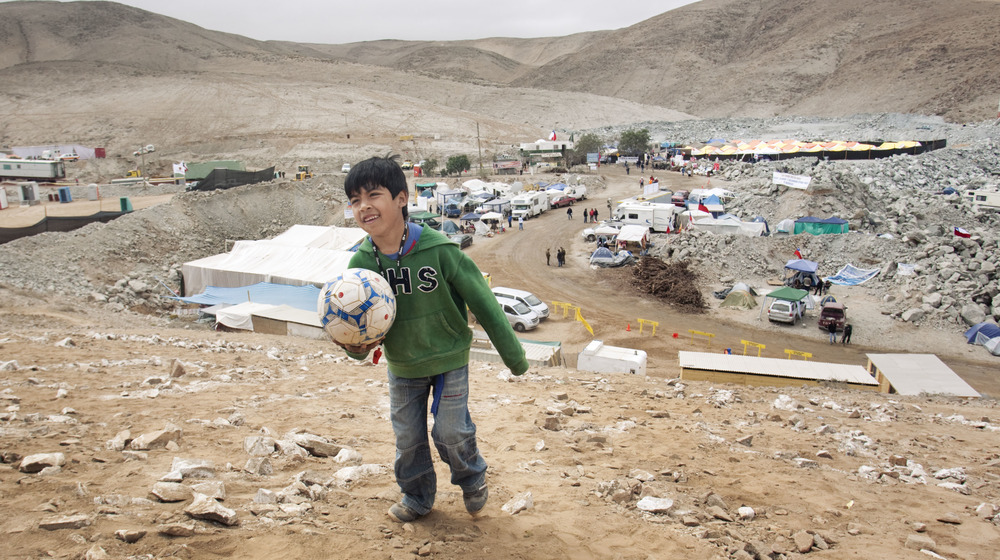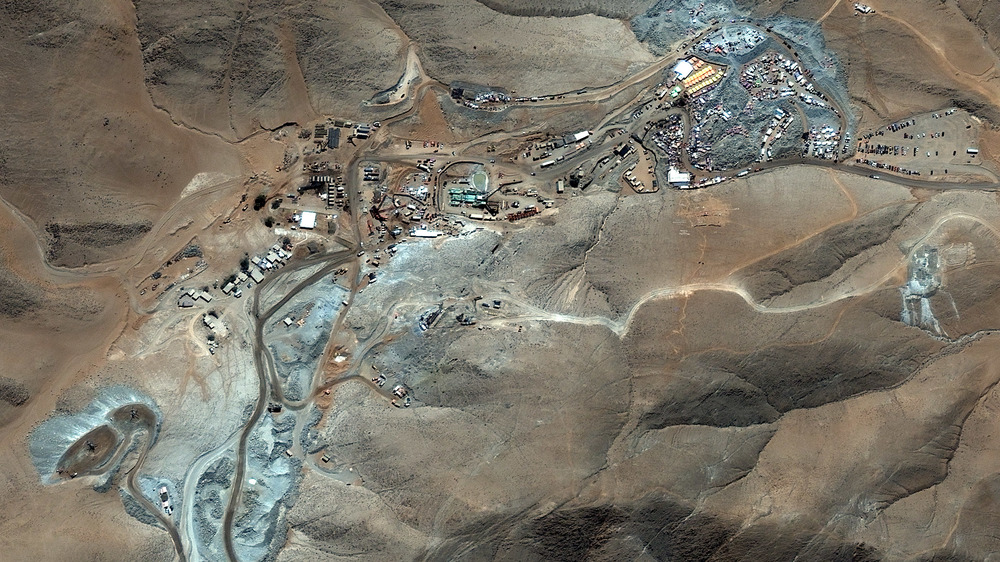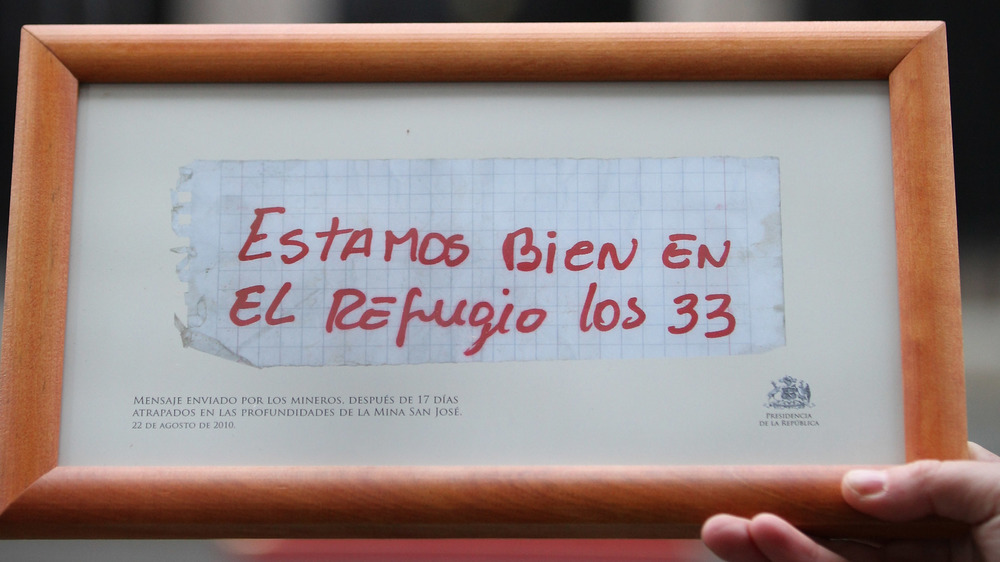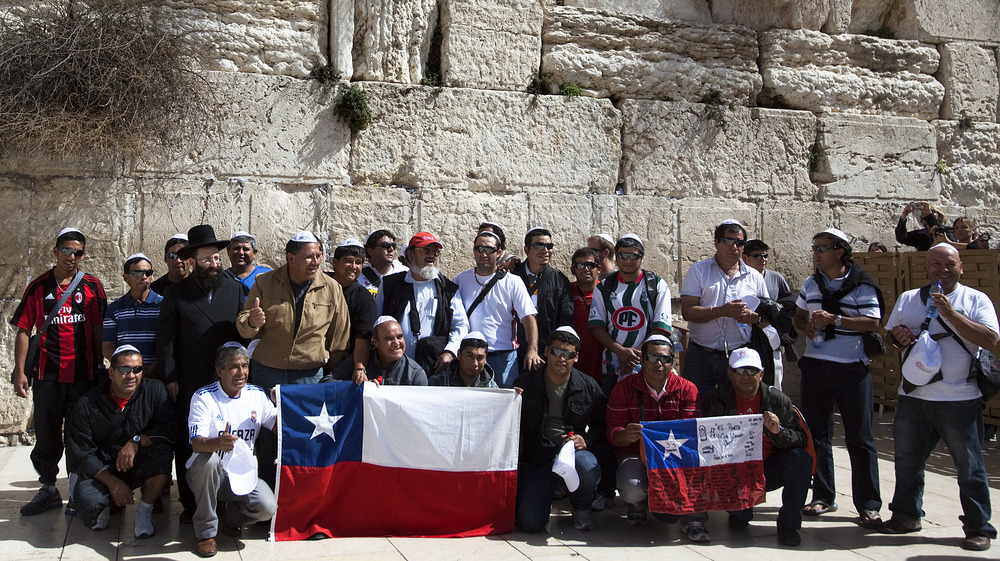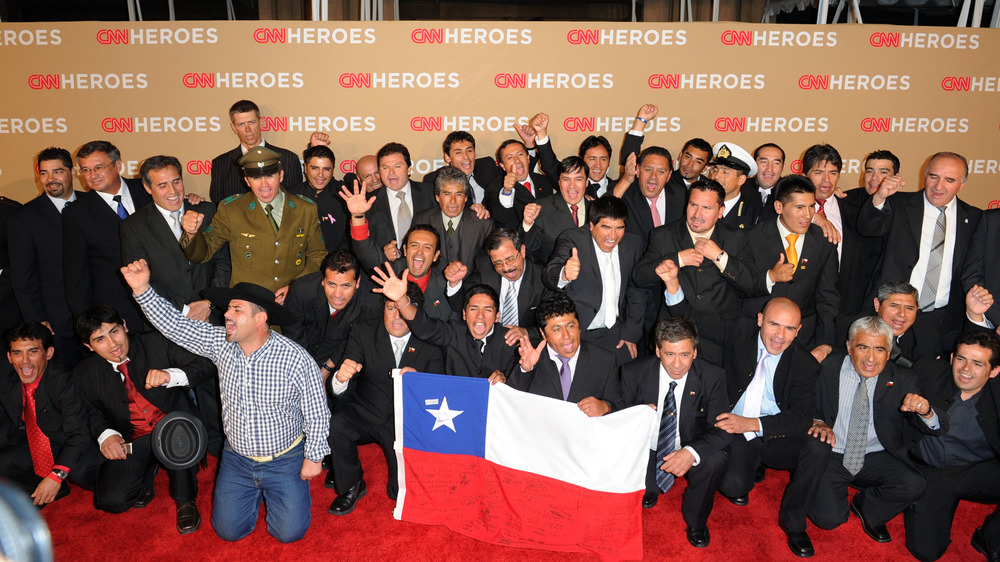The Untold Truth Of The Chilean Miner Rescue
August 5, 2010, seemed like an ordinary day for the men who worked at the San José gold and copper mine in Chile's Atacama Desert. Mining is one of the backbones of Chile's economy, and the South American nation is the number one producer of copper and number two producer of lithium in the world.
The men were gearing up for lunch when they suddenly heard a large explosion. Dust filled up the passageways, and it was only after the debris settled that the 33 men working in the tunnels realized they were trapped more than 2,300 feet below ground.
According to NPR, the blockage had been caused by an avalanche of rocks, spurred by a single block of stone "as tall as a 45-story building" that was twice the weight of the Empire State building. This mammoth boulder had broken off and created a "chain reaction" of other falling rocks that blocked the mine's exit, which was more than three miles away.
No one knew if anyone had survived the cave-in
For the first 17 days following the accident, the families of the trapped miners did not know if their loved ones were even alive. Nevertheless, friends and family members collected together outside of the mine and created a makeshift camp that they called "Campo Esperanza" — in English, Camp Hope. Those who first arrived on the scene described the situation as grim. Not only were the family members dealing with the psychological ramifications of not knowing the fate of the 33 men, but they were also in one of the harshest physical environments on the planet.
According to CNN, the Atacama desert is the driest in the world, with no water except for the occasional blankets of fog known as the camanchacas. During the day, the climate is hot and dry, while at night temperatures are bone-chilling cold.
"It was empty," said Maria Segovia, whose brother was trapped in the mine. "After the accident, we began to build a camp. But at first it was terrible: we slept outside and in the day it was boiling, at night freezing and the worst was we didn't know if our boys were alive."
While conditions in Camp Hope were grim, it was even worse for the men in the mine
Though family members suffered in the aftermath of the explosion, the miners had it even worse. The safety measures in the mine were outdated, and the official refuge for cave-in situations was not only incredibly small at 540 square feet, but also had ventilation problems that were bad enough to force the miners to relocate to the tunnels, per Reuters.
Morale suffered a particular blow after the men attempted to escape through a ventilation shaft but were foiled after learning a ladder was missing. However, the setback may have been a blessing in disguise, as the shaft later caved in.
Another major issue was the lack of food. The emergency supplies only provided two or three days' worth of food. Fortunately, the men had the foresight to ration their provisions. Each miner was given two mouthfuls of tuna and half a glass of milk every 48 hours. By the time emergency services were able to send food down a makeshift shaft, two and a half weeks after the original explosion, the men had lost an average of 18 pounds each.
The rescue attempt was incredibly daring
For weeks, Chilean authorities attempted different ways to reach the men. Eventually, three different tunnels were used to dig down into the mine. The entire nation erupted in cheers after a note, written in red ink, confirmed that the miners were alive.
According to the BBC, the rescue mission is estimated to have cost around $20 million. Not only were specialized drills needed to get so deep under the ground, but a large number of experts were also brought in to work for over two months straight.
The pod that brought the miners to safety was designed with help from NASA scientists, who claimed that the conditions of the men in the mine were not unlike those faced by astronauts in space. Once they reached the surface, the miners needed to wear specialized sunglasses so that their eyes were not injured by the sun.
The physical rescue attempt was not the only challenge. Psychologists spoke to the miners during their time underground to help with the mental health of the trapped victims.
Many of the miners made serious life changes after the horrific experience
The mining accident unsurprisingly had a profound effect on the men, and many were spurred to make serious life changes. Five of the miners ended up proposing to their girlfriends after the ordeal, with some of them even making their declarations of matrimony in notes sent to the surface, per The Guardian.
The 33 men also made sure to live up to a "carpe diem" mantra after their rescue. The group traveled to places such as Greece, Jerusalem, and the United Kingdom. Their fame helped them appear on talk shows, speak at conferences, and attend soccer matches as guests of honor.
It was not just the miners who made life changes. One of the wives of a survivor divorced her husband after the ordeal revealed that he had a mistress. The love triangle was a source of gossip in the tabloids even during the rescue mission, and extramarital affair website Ashley Madison courted controversy after it offered an advertising contract to the miner, with their site's tagline "life is short, have an affair," reported The Guardian.
Though the men survived, the trauma of the experience remains
Though the miners survived and achieved some fame after the cave-in, many have claimed that they have been "forgotten" over the past decade as the memory of their miraculous rescue has faded. Though the miners filed a lawsuit against the Chilean government and won around $100,000 each in compensation, the state has appealed, meaning the men have still not received any financial settlement from the disaster. The legal process was recently delayed yet again due to the coronavirus pandemic.
According to German news outlet Deutsche Well, the miners also claimed that they were deceived by lawyers and producers to give up their rights for a mini-series made about the event. Now, many live on meager government pensions to get by, despite still dealing with the trauma and scars of their experiences. "I wake up at night ... sometimes I'm down in the shaft again, [and] that's not good," confessed Jorge Galleguillos, one of the survivors.
Meanwhile, the mine that was the cause of such pain unsurprisingly remains shuttered and abandoned. "It's really desolate and lonely, and it's haunted. The mouth of the mine looks like the mouth of a monster. So it's a very haunting, dark place ... the San José Mine will never operate again," said Hector Tobar, who wrote a book on the Chilean mine rescue, per NPR.
